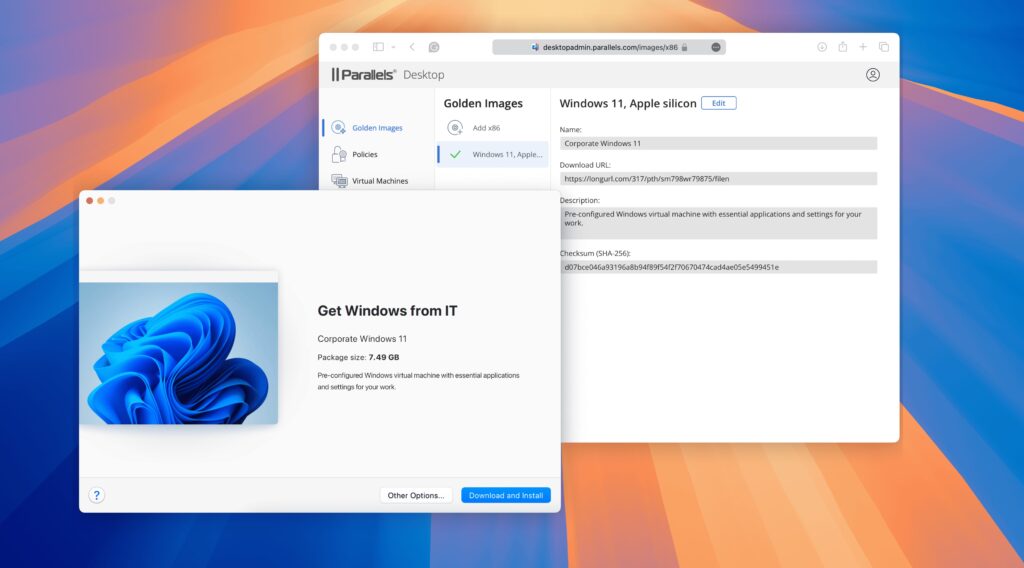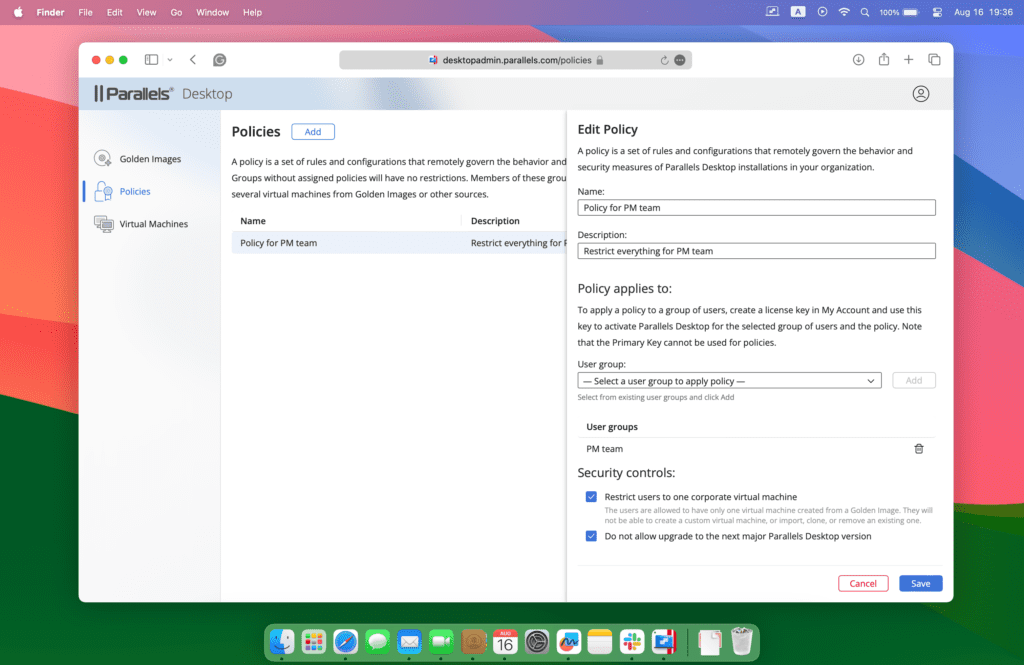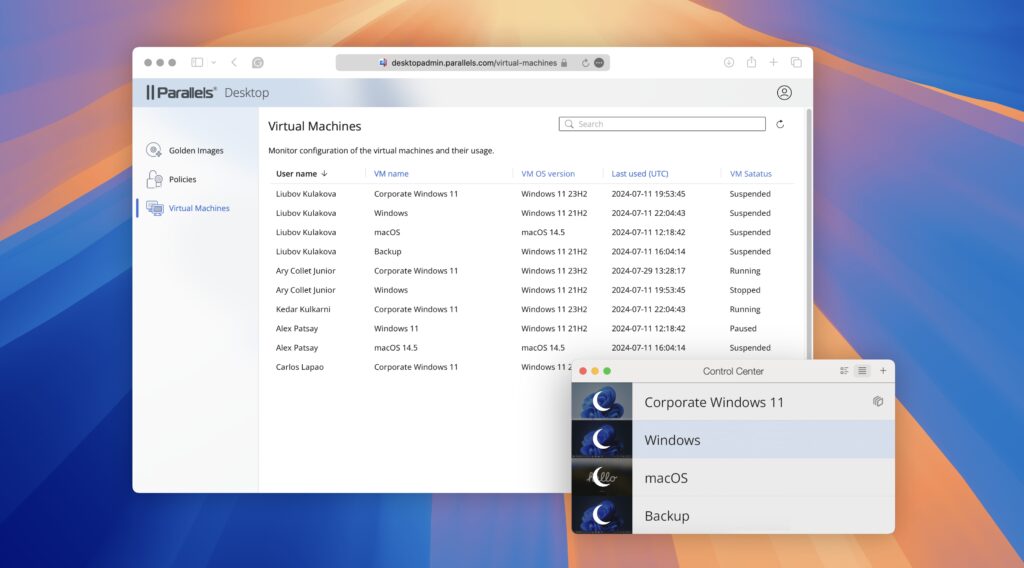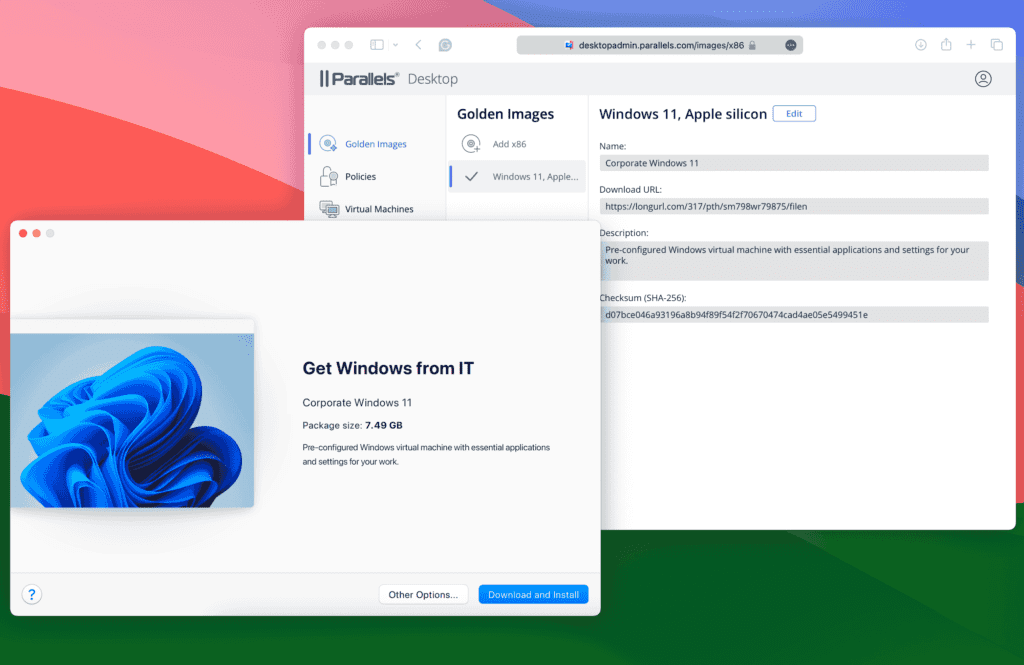
Introducing the new Parallels Desktop Management Portal
For as long as the Parallels Desktop ecosystem has been around, the goal has always been to provide seamless virtualization solutions for Mac users.
With the launch of the Parallels Desktop Enterprise Edition, the Parallels team is taking that experience to a new level.
One aspect I’m particularly excited about is the new Management Portal available in the Enterprise Edition.
This portal is designed to streamline virtual machine (VM) management, deployment, and monitoring for IT administrators.
Are you curious about what this new portal offers and how it can simplify your workflow? Let’s dive right in!
Try Parallels Desktop Enterprise Edition now!
What is the Management Portal?
The Parallels Desktop Management Portal is a cloud-based service built to make life easier for IT teams managing large-scale deployments of Parallels Desktop within their organizations.
It’s tailored for customers who have the need to manage 30 or more Parallels Desktop licenses, and need a more advanced, centralized way to handle their entire virtualization environment.
With just a few clicks, this new portal lets administrators deploy VMs efficiently, control Parallels Desktop installations, monitor what users are up to, and set policies that apply across the board.
The Enterprise Edition also adds flexibility with hybrid licensing, letting you choose between per-user and per-device licensing to suit your needs.
Key features of the Management Portal
1. Centralized VM deployment with golden Images
Golden images let IT administrators create pre-configured VM images that can be deployed to end users in a matter of minutes. This feature eliminates the need for configuring machines individually, speeding up deployment time and ensuring every machine is set up the exact same way. Administrators can also pre-install the needed applications and settings inside the VM to provision to their users.

2. Advanced policy control
The Management Portal gives administrators complete control over how Parallels Desktop is used. Administrators can enforce policies like restricting users to corporate VMs, preventing VM deletion, or limiting access to a single VM. These settings provide a granular level of control, ensuring that users stick to the organizational guidelines. Policies can also be enforced based on user groups which allows admins to create a separate and unique policy for each group.

3. Real-time monitoring and reporting
Monitoring VMs and their usage has never been easier. The portal gives you real-time insights into user activity, helping you stay on top of compliance and manage resources more efficiently. This feature is especially helpful when overseeing large teams and making sure policies are followed.

4. Hybrid licensing for maximum flexibility
A standout feature of the new Parallels Desktop Enterprise edition is its hybrid licensing model, which supports both per-user and per-device activation. This flexibility is ideal for organizations that need to accommodate various user types and licensing preferences.

Benefits of the Management Portal for large organizations
Streamlined management
Managing individual licenses and VMs can be time-consuming and prone to errors. The Management Portal eliminates these issues by centralizing control, allowing admins to deploy, monitor, and manage everything from a single dashboard.
Improved efficiency
With golden images and setting up policies within the portal, admins can roll out new VMs in minutes rather than hours. This speed is crucial in environments where new users or machines need to be onboarded quickly without sacrificing compliance or security.
Scalability matching your growth
Whether your organization has 30 or 300 employees, the Management Portal grows with you. Thanks to its hybrid licensing model and centralized controls, handling even the most significant deployments remains smooth and hassle-free.
What’s next for the Parallels Desktop Enterprise Edition?
The initial release of the Management Portal is already packed with powerful features, but there is so much more to come.
Support for SSO activation has been added in version 20.2 of Parallels Desktop Enterprise Edition, allowing for seamless integration with your existing identity provider. The Parallels team is also working on support for multiple golden images and improved group management, making the portal even more versatile for large, complex environments.
Ready to explore the new Management Portal?
The new Management Portal is now available in the new Parallels Desktop Enterprise Edition. Explore how it improves efficiency for IT admins in our on-demand webinar, which includes a demo of this simple, intuitive platform for managing all your Parallels Desktop instances.
Access the webinar to learn how the new Management Portal enables IT admins to save hours of work and improve consistency, accuracy, and end user satisfaction.
Here are just a few of the features and capabilities you’ll explore:
- Automating deployment across hundreds or thousands of endpoints in minutes.
- Controlling user access and configuring settings across multiple devices from a single dashboard.
- Gathering insights with built-in reporting and analytics so you can optimize resource allocation and identify potential issues before they impact users.
- Enforcing company-wide policies via centralized controls, ensuring all endpoints remain secure.
If you’re an existing Parallels Desktop Business customer and would like to explore these new features, upgrading to the Enterprise Edition is simple. Just reach out to your Parallels sales representative to start a trial or speak about how the Management Portal can revolutionize the way you manage VMs in your organization.
For more details, including a full admin guide and setup instructions, visit the Parallels Desktop Enterprise Edition Admin Guide.

